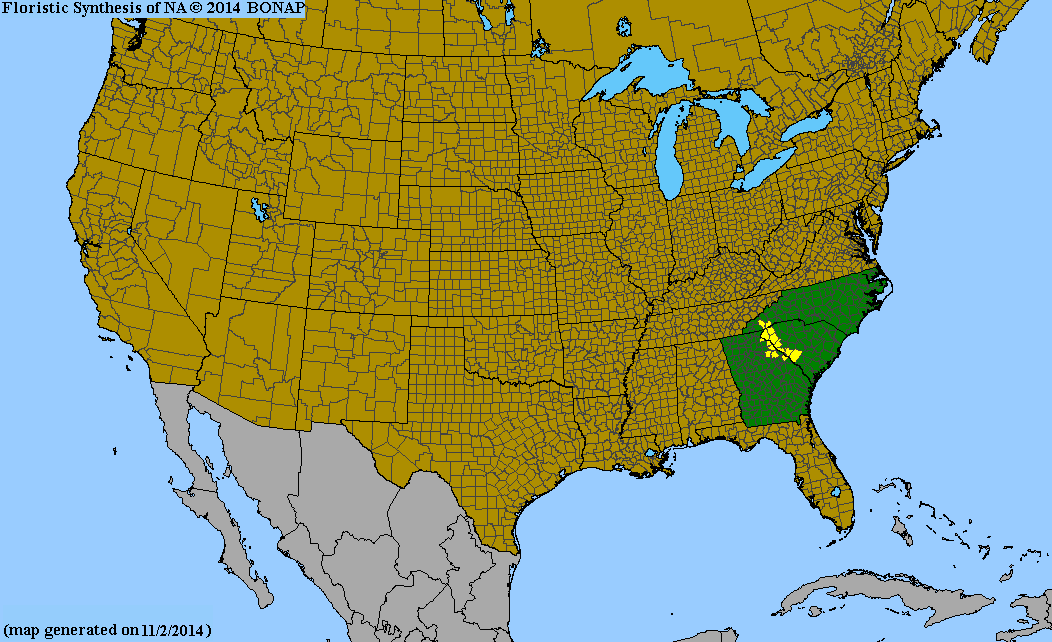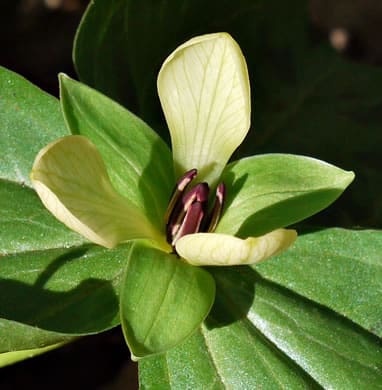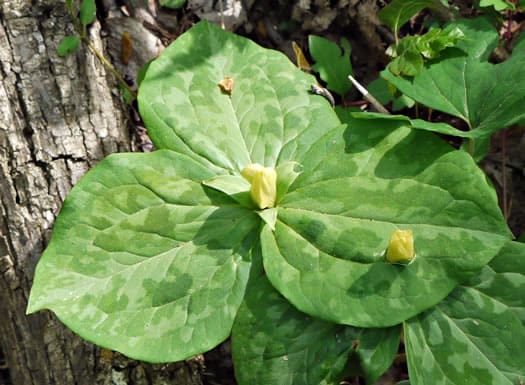Trilliaceae
pale yellow trillium
Trillium discolor
Other Common Names
pale trillium, small yellow toadshade, mottled wakerobin
Plant Type
Herbaceous Wildflower
Life Cycle
Perennial
Typical Size
0.5-1 ft. tall
1-3 ft. wide
Inolerant of
Dry Soil, Direct Afternoon Sun
Plant Planting Notes
Does not transplant well.
Plants/Diseases
May be fed on by slugs or snails and sometimes experiences foliar disease.
Wildlife Benefits
Nectar/pollen source for pollinating insects
Leaves
The “leaves” are actually bracts. Whorled, elliptical with entire margins and mottled coloration.
Flowers
Pale yellow, solitary flowers
Fruit
Capsule
Toxicity
Low toxicity if ingested.

USDA Hardiness Zones
5, 6, 7, 8
Light Exposure
Part Sun/Shade, Full Shade
Soil Moisture
Moist
Soil Drainage
Well-drained
Native in South Carolina?
Yes
Plant Native Habitat
Rich coves and bluffs in forests of the Savannah River drainage
Global Conservation Status (NatureServe)
Vulnerable (G3)
Federal Conservation Status (USFWS)
Not Listed
Distribution Notes
Rare in the South Carolina piedmont and mountains restricted to the Savannah River drainage.


